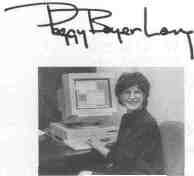 |
Home | Search | Browse | About IPO | Staff | Links |
 |
Home | Search | Browse | About IPO | Staff | Links |
|
EDITOR'S NOTEBOOK

Computer analysis helps us assess the governor's appointments by Peggy Boyer Long For more than two decades, this magazine has been something of a "publication of record" on gubernatorial appointments. Illinois Issues has published the names of many, if not most of the people appointed by three governors to dozens of major and not-so-major state boards and commissions. So it seemed appropriate for us to conduct the first comprehensive look at the appointment process. Over the years, some patterns seemed clear to our staff. The names of the politically connected pop up consistently; many of the positions provide hefty full- or part-time salaries; and though a number of the panels have the power to shape policy, most are so obscure the public has little idea who sits on them or what they do. In fact, even Gov. Jim Edgar's staff seemed caught off-guard by some of what we discovered in our analysis. And that, says journalist Tom Brune, is the beauty of using computer technology in reporting. "The computer becomes a super-file-card system," he says. "It does that by taking massive amounts of data and sorting it into categories. That allows you to find patterns and practices no one was aware of. And it finds things that have gone wrong that could be fixed." The latest technology enables reporters to keep better track of government. The computer is a 'super-file-card system' He spent seven months collecting and entering the data in his home computer for us. (His analysis of that data was supplemented with reporting by our own staff.) Brune has conducted such projects for The Chicago Reporter (where in 1978 he helped prove that the city's black and Hispanic wards were short-changed on park spending) and the Chicago Sun-Times (where last year he helped prove that the city's voter rolls included thousands of duplicates, people who had moved and those who had died). Brune, who says analyzing appointments is a perfect example of what can be done with computers, created a database from information provided by the governor's office, the Legislative Research Unit and the state comptroller. He did the data entry himself. His analysis, backed up with interviews, shows that Edgar made more than 2,000 appointments to 225 boards and commissions between the beginning of 1991 and the end of 1995. Notably, Edgar appointed two men for every woman overall, and three men for every woman to boards that pay salaries. And the tab for all these panels — advisory and policy-setting — is significant. Last year taxpayers paid members of boards and commissions $4.5 million in salaries, per diems and expenses, providing full- or part-time employment to more than 100 appointees and covering expenses for another 500 board members. Not surprising, appointments go generally to political friends. We found 12 Republican county chairmen, a dozen former state legislators and many former aides to Edgar and his predecessor, Jim Thompson. Indeed, the highest number of appointments in any given year — 646 — occurred in 1994, when Edgar ran for re-election. "We are taking a look at a little- known, but widely used system for rewarding political friends," says Brune. "If people think that's OK, fine. But it's important for people to understand what's going on." For us, the project was a good way to inform our readers about Illinois government. 4 / October 1996 Illinois Issues |
|
This page is created by Sam S. Manivong, Illinois Periodicals Online Coordinator |